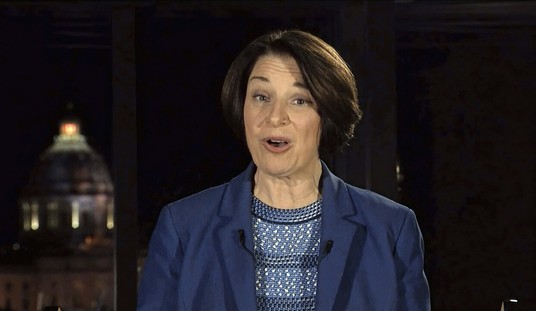Tents set up in Laredo and Brownsville, Texas for the purpose of holding immigration hearings under the Migrant Protection Protocol (MPP), also known as the “Remain in Mexico” program, are opening. The first to open was in Laredo Wednesday and the one in Brownsville opened Thursday.
You may remember back in July I wrote about the virtual immigration courtrooms being set up to allow immigration judges to preside in hearings via video conferencing. This is a way to ease the backlog of cases at the border. For example, immigration judges in San Antonio can hold hearings with migrants seeking asylum that were sent back to Mexico to await their turn before a judge. They go to Laredo or Brownsville and their hearing, in a tent facility, is via video with a judge in San Antonio.
Guess who are squawking about the protocol? Reporters and immigration advocates are ticked-off that the hearings are closed to the public. Wednesday, a Buzzfeed reporter was turned away when he tried to enter the facility in Laredo. He was told that only “law enforcement, attorneys with clients, and contractors” were allowed.
I wasn’t allowed to observe the first MPP/“Remain in Mexico” hearings at the tents in Laredo, TX because they’re “not open to the public,” a DHS officer said. Was told the only people allowed inside the tents DHS built are law enforcement, attorneys with clients, and contractors. pic.twitter.com/c1aT3P4dPW
— Adolfo Flores (@aflores) September 11, 2019
Critics reference 8 CFR 1003.27 in the Code of Federal Regulations. What I find with that reference, though, is that while it does speak to the right of public access to immigration hearings, it also specifically states:
(a) Depending upon physical facilities, the Immigration Judge may place reasonable limitations upon the number in attendance at any one time with priority being given to the press over the general public;
(b) For the purpose of protecting witnesses, parties, or the public interest, the Immigration Judge may limit attendance or hold a closed hearing.
I’m not a lawyer but to me, this reads that the Department of Homeland Security is within its rights to limit the people entering one of these tents when hearings are held. I assume space is limited for the general public, for instance, though there are multiple rooms. Perhaps it is a safety issue. It also seems best to me that the migrants going before a judge receive some personal privacy so as not to be exposed to those who would take advantage of them – not just the media looking to push the narrative that the bad Orange Man’s administration is inhumane but also human traffickers and drug cartels looking for desperate victims. The press is given priority but the Immigration Judge has the ability to hold a closed hearing or limit attendance.
These tents are temporary facilities designed to help manage the backlog of cases at the border. The tents are equipped with state of the art video equipment so that judges across the country can conduct hearings without traveling to the border. The purpose of MPP, signed into effect in January, is that foreign nationals illegally entering the United States are sent back over the border into Mexico to wait for a hearing. Before the new tent facilities became available, only two immigration courts in San Diego and El Paso processed asylum claims. The use of tent facilities in Laredo and Brownsville is much needed as the border is so overcrowded with thousands of people who have been apprehended trying to cross the border illegally.
The “soft-sided” hearing structures are a temporary setup allowing aliens to process their claims by judges via VTC video conference. In Laredo, for example, there are 18 hearing rooms, with each room supplied with “state-of-the-art” VTC equipment. Brownsville, a much larger establishments, has 66 rooms. Judges from the interior of the country can video conference in and hear asylum cases from migrants at the southern border. The facilities also include waiting rooms for public attorneys and witnesses, and special waiting rooms for attorneys to meet with clients.
“I will tell you that we sell ourselves short when we say ‘soft-sided’ because these are hard-sighted structures that can withstand weather and things like that. I don’t want people to get the idea that these are tents in the middle of nowhere,” an official with the Justice Department said.
The camps, which include air conditioning and other amenities for occupants, are located near ports of entry in a secure area on land operated by Customs and Border Protection. People also enjoy security from Federal Protective Services, who not only conduct perimeter security, but also protect those visiting the facility.
It should be remembered that this new operation at the border has only just begun. This week was described as a soft launch – only six cases were on the docket in Brownsville Thursday. Immigration advocates complain that watching the hearings from courtrooms of consenting judges but not in the tents limits them to see “only where the government-controlled camera points inside the tents.”
In Brownsville, no cases were scheduled for Friday but Monday the tent facility will have a full docket. Reporters will also have access to the San Antonio immigration court, where judges will be hearing MPP cases via video. Look for press access to the hearings to continue to be a topic of contention. The need for these tent facilities on the border is great.
Over 6,000 migrants who arrived in Laredo have been returned to Mexico under MPP; more than 6,000 in Brownsville have also been sent back across the border. Nationwide, more than 42,000 have been returned.
On October 1 in California a court hearing will be held to determine the legality of MPP.







Join the conversation as a VIP Member